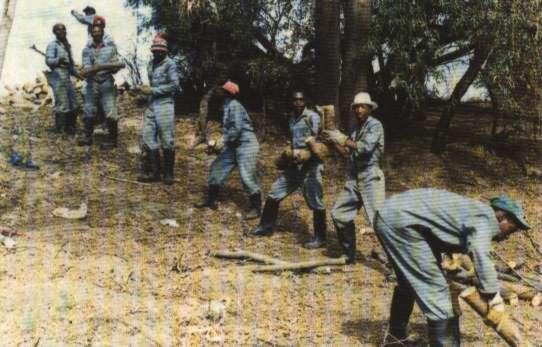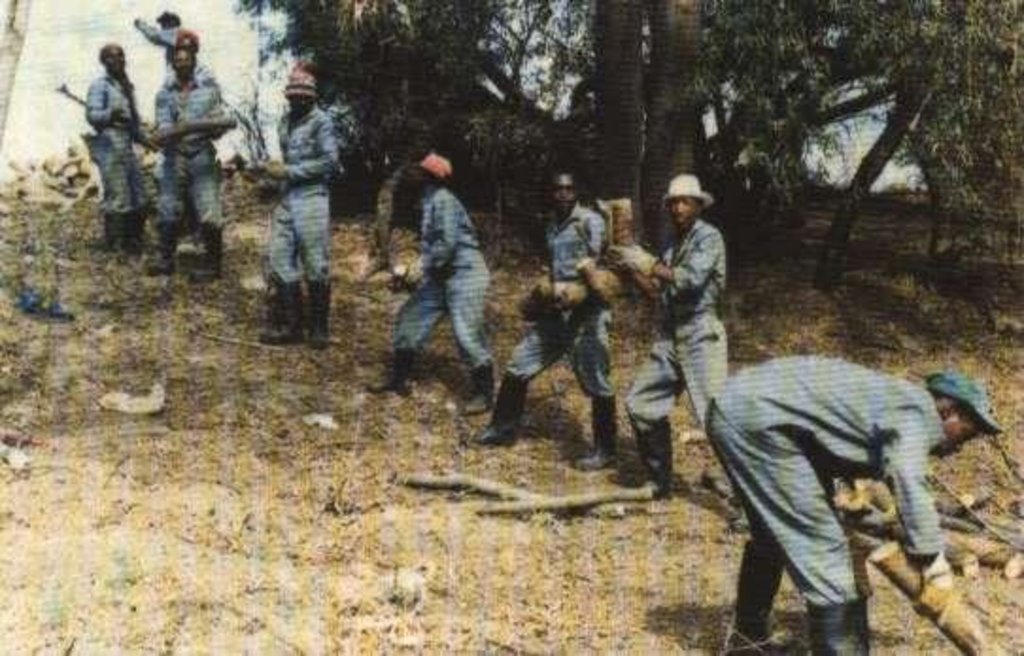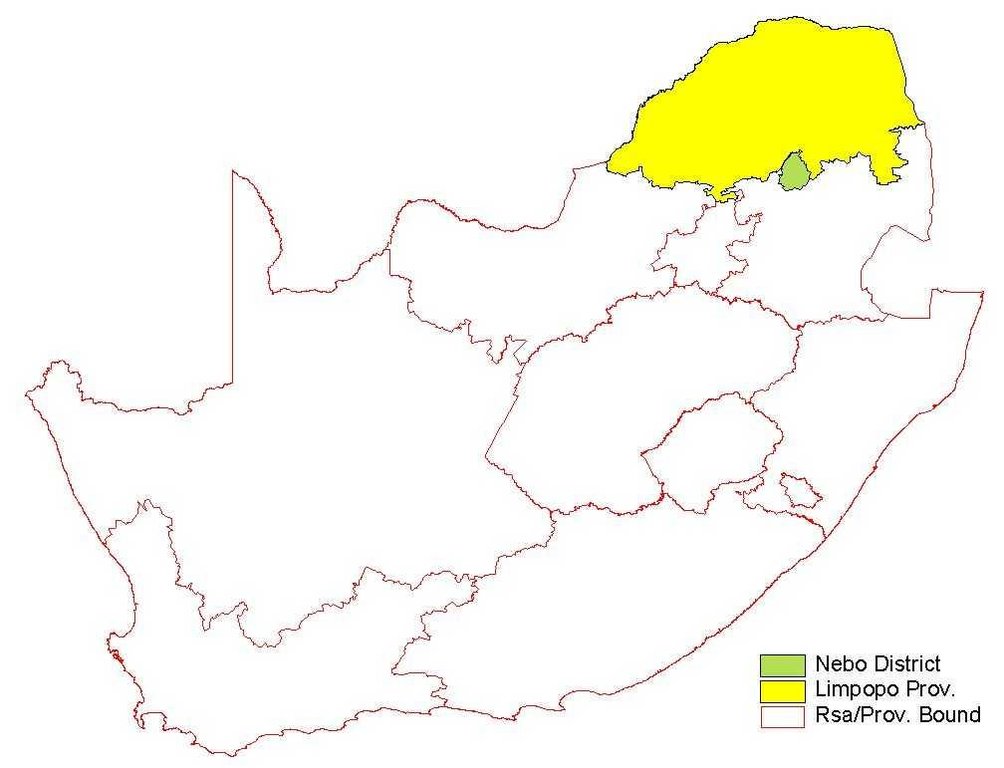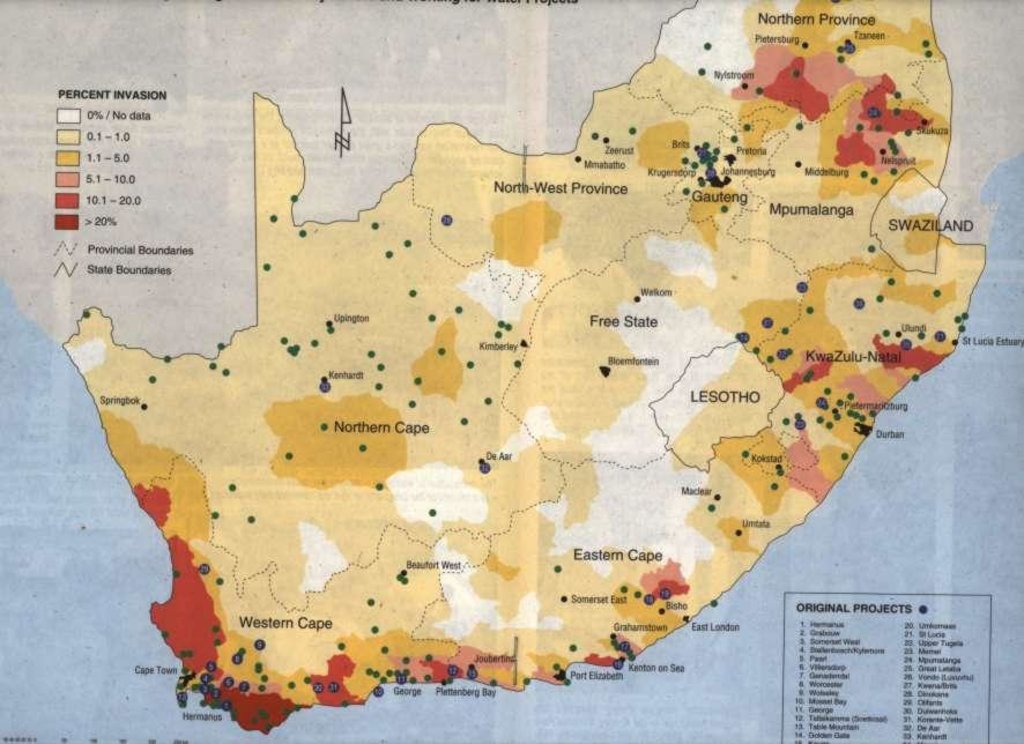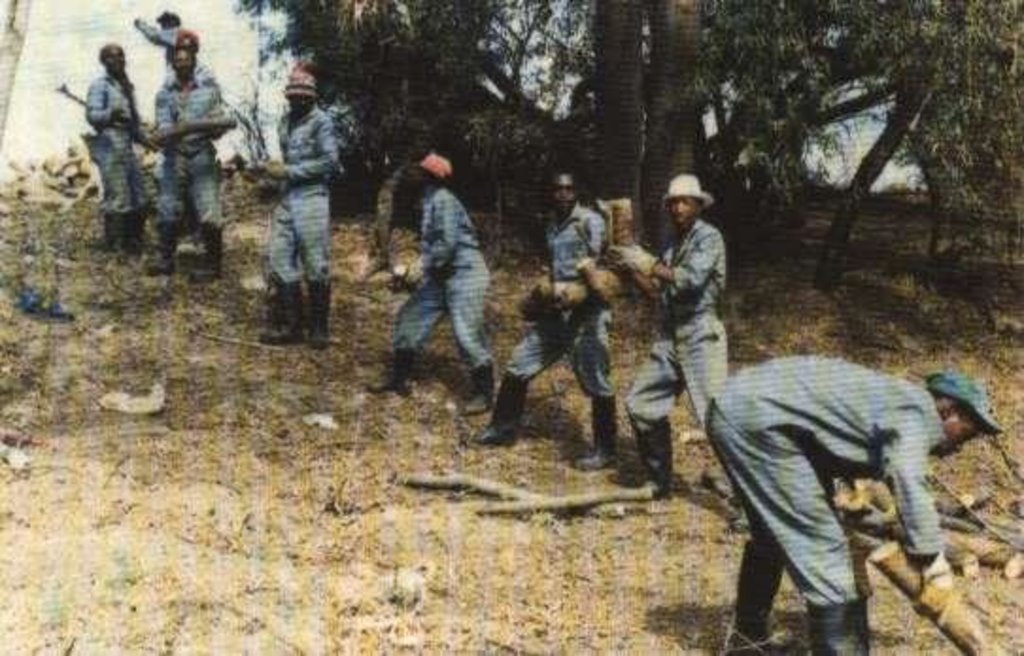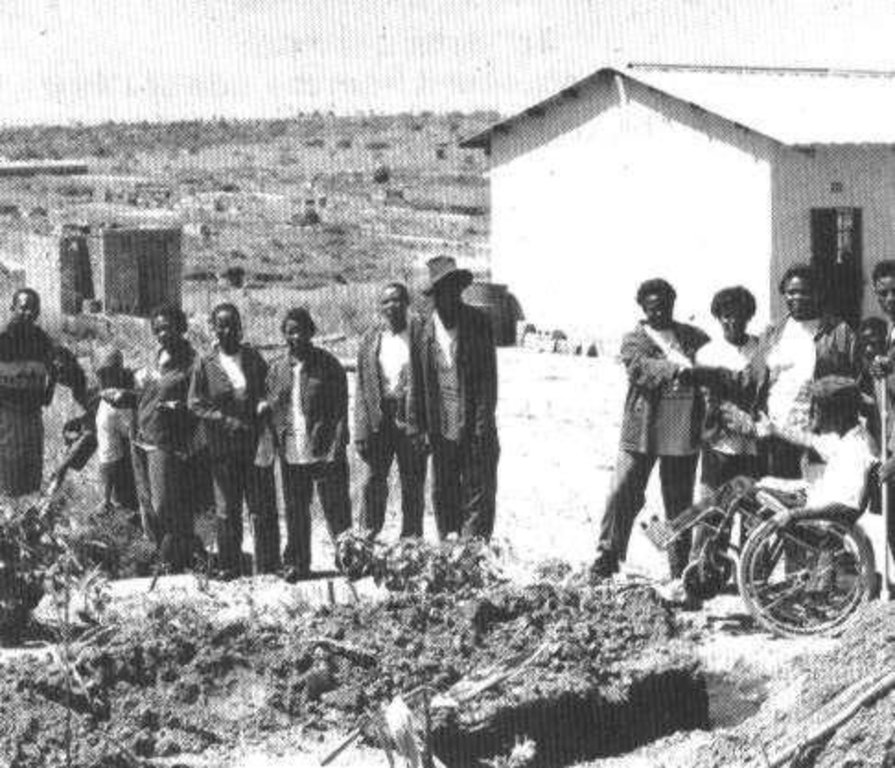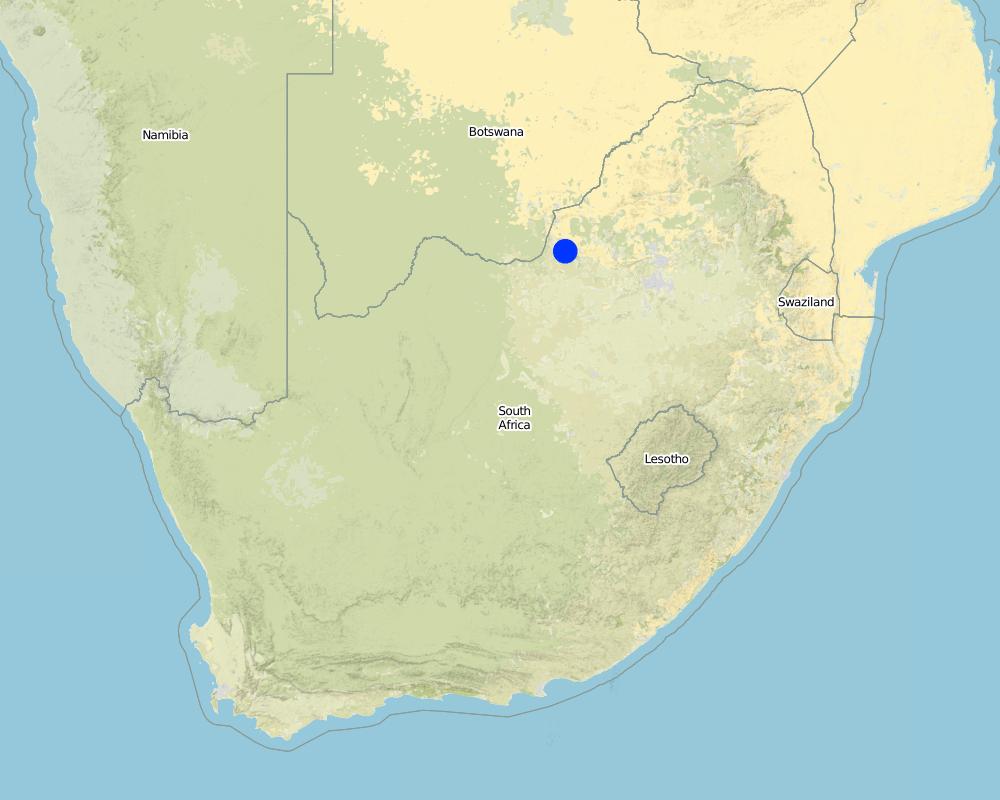Inter departmental approach [Sudáfrica]
- Creación:
- Actualización:
- Compilador: Jacqui Coetzee
- Editor: –
- Revisor: Fabian Ottiger
approaches_2644 - Sudáfrica
Visualizar secciones
Expandir todo Colapsar todos1. Información general
1.2 Detalles de contacto de las personas de referencia e instituciones involucradas en la evaluación y la documentación del Enfoque
Nombre de la(s) institución(es) que facilitaron la documentación/ evaluación del Enfoque si fuera relevante)
Working for Water (WfW) - Sudáfrica1.3 Condiciones referidas al uso de datos documentados mediante WOCAT
El compilador y la/s persona(s) de referencia claves aceptan las condiciones acerca del uso de los datos documentados mediante WOCAT :
Sí
2. Descripción del Enfoque MST
2.1 Breve descripción del Enfoque
Eradication of invasive alien plants to enhance water sustainability by increasing run-off into dams & rivers.
2.2 Descripción detallada del Enfoque MST
Descripción detallada del Enfoque MST:
Aims / objectives: Programme started in October 1995, employing previously disadvantaged unemployed people to clear invading trees in catchments and along rivers. This has been going on for approximately 4 years. The leading department is the Department of Water Affairs and Forestry but they have been in partnerships with a number of other departments e.g. Land Affairs, Agriculture, South African National Parks, Welfare etc. Labour intensive methods are used to clear trees and apply herbicides to prevent regrowth. Where in sensitive areas, rehabilitation techniques are employed e.g. sowing grass seeds and re-establishing indigenous plants. There are also some wetland rehabilitation projects across the country where engineering techniques are used to rehabilitate wetlands. The Inter-departmental approach is unique in the country, but very important as objectives span all departments. The work is done on farmland, community land, private company land and governmental land. New laws will force landowners to clear large stands of alien trees in future and this programme offers landowners a way of clearing their land before the law is enforced. The approach is to use labour intensive clearing techniques to provide jobs and also tackle an ecological problem. In so doing, the programme tackles socio-economic issues and environmental issues. The major objective is to create sustainable water supplies in a drought prone country; hence - Working for Water'- (providing work to unemployed and increasing water availability).
2.3 Fotos del Enfoque
2.5 País/ región/ lugares donde el Enfoque fue aplicado
País:
Sudáfrica
Región/ Estado/ Provincia:
All 9 Provinces
Map
×2.6 Fechas de inicio y conclusión del Enfoque
Indique año del inicio:
1995
Año de conclusión (si el Enfoque ya no se aplica):
2015
2.7 Tipo de Enfoque
- proyecto/ basado en un programa
2.8 Propósitos/ objetivos principales del Enfoque
The Approach focused mainly on SLM with other activities (Social development & job creation; AIDS/HIV awareness, cr??ches, secondary industries)
- To clear invasive alien plants & re-establish indigenous vegetation. - To create jobs - To find markets for wood products - To promote productive potential of land - Facilitate economic empowerment
The SLM Approach addressed the following problems: Aggressively invading alien plants; wetland rehabilitation; biodiversity impacts; social development & empowerment.
2.9 Condiciones que facilitan o impiden la implementación de la/s Tecnología/s aplicadas bajo el Enfoque
disponibilidad/ acceso a recursos y servicios financieros
- impiden
Expensive to clear large tracts of land
Treatment through the SLM Approach: SA is drought prone, sold the idea on potential water benefits.
entorno institucional
- impiden
Responsibly to clear plants falls between 2 departments - Environment & Agriculture
Treatment through the SLM Approach: On back of water benefit, Department of Water Affairs began clearing
marco de trabajo legal (tenencia de tierra, derechos de uso de tierra y agua)
- impiden
Law was not enforced and also not defendable in court.
Treatment through the SLM Approach: Water law & Agricultural resources Act is under review to be more comprehensive.
The existing land ownership, land use rights / water rights moderately hindered the approach implementation Difficult to explain to landowner why we want to chop trees on their property, does not have to let us on.
otros
- impiden
Perceptions: People perceive a tree as good - do not distinguish between alien & indigenous
Treatment through the SLM Approach: Massive public awareness campaign.
3. Participación y roles de las partes interesadas involucradas
3.1 Partes interesadas involucradas en el Enfoque y sus roles
- especialistas MST/consejeros agrícolas
Municipalities; Water boards
Previously disadvantaged groups (e.g. by apartheid system), women & youth. 50-60% of our work force are women. Very physically demanding work therefore not many women. Chainsaw operators. Women are also nervous of being in supervisory position or take on responsibility of being contractors. Not many women project managers - partially due to fact that forestry industry is mostly male dominated. Communities supply the labour to do clearing through consultation, become aware of impacts of alien plants
- ONG
CSIR; Conservation bodies; SA National Parks
- sector privado
Forestry companies
- gobierno nacional (planificadores, autoridades)
Department of Water Affairs & Forestry (head agency)
Si varias partes interesadas estuvieron involucradas, indique la agencia principal:
Dr. Brain van Wilgen: Scientific input on clearing operations. Dr Amy Presten: Scientific & Social Implications. (Dr Christo Marais): Nature Conservation Specialists on biodiversity and a number of forestry specialists as well.
3.2 Involucramiento de los usuarios locales de tierras/ comunidades locales en las distintas fases del Enfoque
| Involucramiento de los usuarios locales de tierras/ comunidades locales | Especifique quién se involucró y describa las actividades | |
|---|---|---|
| iniciación/ motivación | pasivo | rapid/participatory rural appraisal; Land owners informed of project and project manager determines if possible to work on land |
| planificación | interactivo | rapid/participatory rural appraisal; Alien vegetation mapped at 1: 50 000, social dynamics determined, availability of funding plays a major role |
| implementación | apoyo externo | Mainly: casual labour; partly: responsibility for minor steps; Community supplies labour to clear trees; can be responsible to provide transport etc. |
| monitoreo y evaluación | pasivo | Local people (farmers, communities) provide valuable feedback on progress; evaluation process mostly external |
| Research | pasivo |
3.4 La toma de decisiones en la selección de Tecnología(s) MST
Especifique quién decidió la selección de las Tecnología/ Tecnologías a implementarse:
- por políticos/ líderes
Explique:
directive (top-down).
Decisions on the method of implementing the SLM Technology were made by mainly by SLM specialists with consultation of land users. directive (top-down).
4. Apoyo técnico, fortalecimiento institucional y gestión del conocimiento
4.1 Construcción de capacidades / capacitación
¿Se proporcionó la capacitación a usuarios de tierras/ otras partes interesadas?
Sí
Forma de capacitación:
- en el contexto de trabajo
- cursos
Temas avanzados:
Alien plant awareness, water conservation awareness, all workers are given an introduction course on program principles
4.3 Fortalecimiento institucional (desarrollo institucional)
¿Se establecieron o fortalecieron instituciones mediante el Enfoque?
- sí, un poco
Especifique el nivel o los niveles en los que se fortalecieron o establecieron las instituciones:
- local
4.4 Monitoreo y evaluación
¿El monitoreo y la evaluación forman parte del Enfoque?
Sí
Comentarios:
technical aspects were regular monitored through measurements
socio-cultural aspects were ad hoc monitored through observations
economic / production aspects were regular monitored through measurements
area treated aspects were regular monitored through measurements
management of Approach aspects were regular monitored through measurements
There were many changes in the Approach as a result of monitoring and evaluation: External M & E identified many problems in implementation of approach and inefficient operations standards were developed and are being applied. More stress on productivity. More detailed and planned social awareness projects were implemented rather than ad hoc approaches.
4.5 Investigación
¿La investigación formó parte del Enfoque?
Sí
Proporcione detalles adicionales e indique quién hizo la investigación:
Biological control research & implementation in certain areas; impact of programme on local communities; cost/benefit of clearing alien plants
Research was carried out both on station and on-farm
5. Financiamiento y apoyo material externo
5.1 Presupuesto anual para el componente MST del Enfoque
Comentarios (ej. fuentes principales de financiamiento/ donantes principales):
Approach costs were met by the following donors: government (national - Department of Water Affairs): 90.0%; international non-government (Municipalities/water board/local authori): 10.0%
5.2 Apoyo financiero/material proporcionado a los usuarios de tierras
¿Los usuarios de tierras recibieron financiamiento/ apoyo material para implementar la Tecnología/ Tecnologías? :
Sí
5.3 Subsidios para insumos específicos (incluyendo mano de obra)
- equipo
| Especifique qué insumos se subsidiaron | En qué grado | Especifique los subsidios |
|---|---|---|
| maquinaria | totalmente financiado | Chainsaws |
| herramientas | totalmente financiado | Slasher |
- agrícola
| Especifique qué insumos se subsidiaron | En qué grado | Especifique los subsidios |
|---|---|---|
| Biocides | totalmente financiado | |
- infraestructura
| Especifique qué insumos se subsidiaron | En qué grado | Especifique los subsidios |
|---|---|---|
| Community infrastructure | parcialmente financiado | |
Si la mano de obra de usuarios de tierras fue un insumo sustancial, ¿fue:
- pagado en efectivo?
Comentarios:
Wages & salaries for workers
5.4 Crédito
¿Se proporcionó crédito bajo el Enfoque para actividades MST?
No
6. Análisis de impacto y comentarios de conclusión
6.1 Impactos del Enfoque
¿El Enfoque ayudó a los usuarios de tierras a implementar y mantener Tecnologías MST?
- No
- Sí, un poco
- Sí, moderadamente
- Sí, mucho
Water management more sustainable and improved biodiversity and decrease erosion
¿El Enfoque mejoró cuestiones de tenencia de tierra/ derechos de usuarios que obstaculizaron la implementación de la Tecnologías MST?
- No
- Sí, un poco
- Sí, moderadamente
- Sí, mucho
We need a law to enable us to clear trees, the law is still in development and not enforceable as yet. Rely on registrations with landowners. The problem is likely to be overcome in the near future. 2 new laws in pipeline - Agricultural - Natural Resources act & New Water law which will list alien plants as a stream flow reduction activity.
Did other land users / projects adopt the Approach?
- No
- Sí, un poco
- Sí, moderadamente
- Sí, mucho
South Africa National Parks - using alien clearing on their parks to enhance social situation & empowerment
6.3 Sostenibilidad de las actividades del Enfoque
¿Pueden los usuarios de tierras sostener lo que se implementó mediante el Enfoque (sin apoyo externo)?
- sí
6.4 Fortalezas/ ventajas del Enfoque
| Fuerzas/ ventajas/ oportunidades desde la perspectiva del usuario de la tierra |
|---|
| Sustainable water supply in drought prone areas (How to sustain/ enhance this strength: Bring alien plant invasions to a sustainable/maintenance level to allow landowners minimal input to control them) |
| Increased biodiversity in invaded areas (How to sustain/ enhance this strength: Bring alien plant invasions to a sustainable/maintenance level to allow landowners minimal input to control them) |
| Empowerment at local communities (How to sustain/ enhance this strength: WFW is just a kick start for the communities, once they have receive training they are empowered to seek jobs elsewhere) |
| Vehicle for many other departments to reach a large number of people (e.g. for HIV/AIDS awareness, rape/abuse) (How to sustain/ enhance this strength: WFW is just a kick start for the communities, once they have receive training they are empowered to seek jobs elsewhere) |
| Fuerzas/ ventajas/ oportunidades desde la perspectiva del compilador o de otra persona de referencia clave |
|---|
| Sustainable water supply in drought prone areas (How to sustain/ enhance this strength: Bring alien plant invasions to a sustainable/maintenance level to allow landowners minimal input to control them) |
| Increased biodiversity in invaded areas (How to sustain/ enhance this strength: Bring alien plant invasions to a sustainable/maintenance level to allow landowners minimal input to control them) |
| Empowerment at local communities (How to sustain/ enhance this strength: WFW is just a kick start for the communities, once they have receive training they are empowered to seek jobs elsewhere) |
| Vehicle for many other departments to reach a large number of people (e.g. for HIV/AIDS awareness, rape/abuse) (How to sustain/ enhance this strength: WFW is just a kick start for the communities, once they have receive training they are empowered to seek jobs elsewhere) |
6.5 Debilidades/ desventajas del Enfoque y formas de sobreponerse a ellos
| Debilidades/ desventajas/ riesgos desde la perspectiva del usuario de la tierra | ¿Cómo sobreponerse a ellas? |
|---|---|
| Stop or start the nature of funding - contract workers who never know if they have a job from one year to the next | Sustainable funding |
| Debilidades/ desventajas/ riesgos desde la perspectiva del compilador o de otra persona de referencia clave | ¿Cómo sobreponerse a ellas? |
|---|---|
| Lack of planning | Sustainable and assured funding will allow for better planning and mapping |
| Lack of adequate alien vegetation maps | Sustainable and assured funding will allow for better planning and mapping |
| Lack of national weeds policy | Need to mobilise relevant departments to start work |
| Lack of follow-up because of inadequate planning and mapping |
7. Referencias y vínculos
7.1 Métodos/ fuentes de información
- visitas de campo, encuestas de campo
- entrevistas con usuarios de tierras
Vínculos y módulos
Expandir todo Colapsar todosVínculos
No hay vínculos
Módulos
No se hallaron módulos


